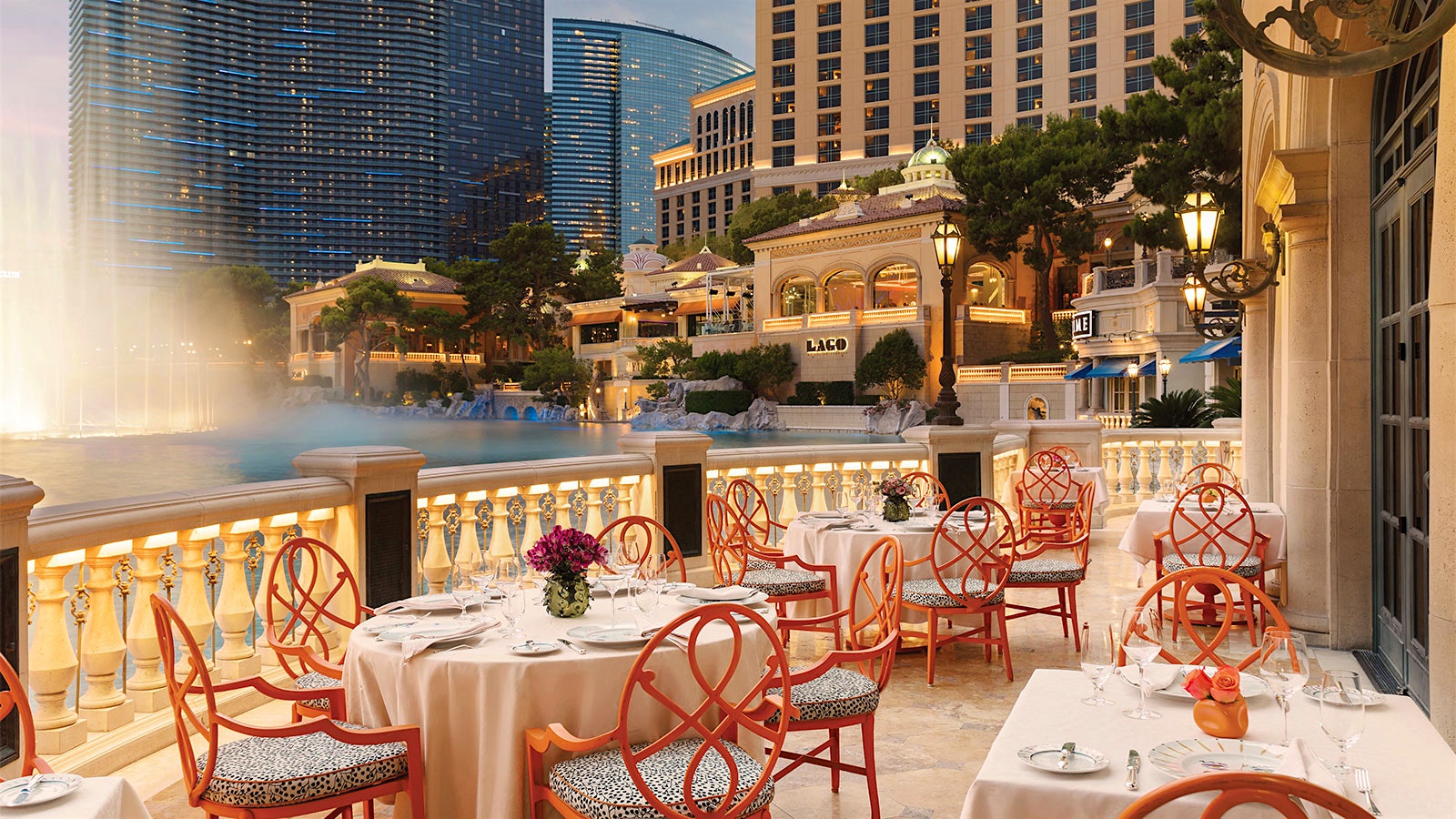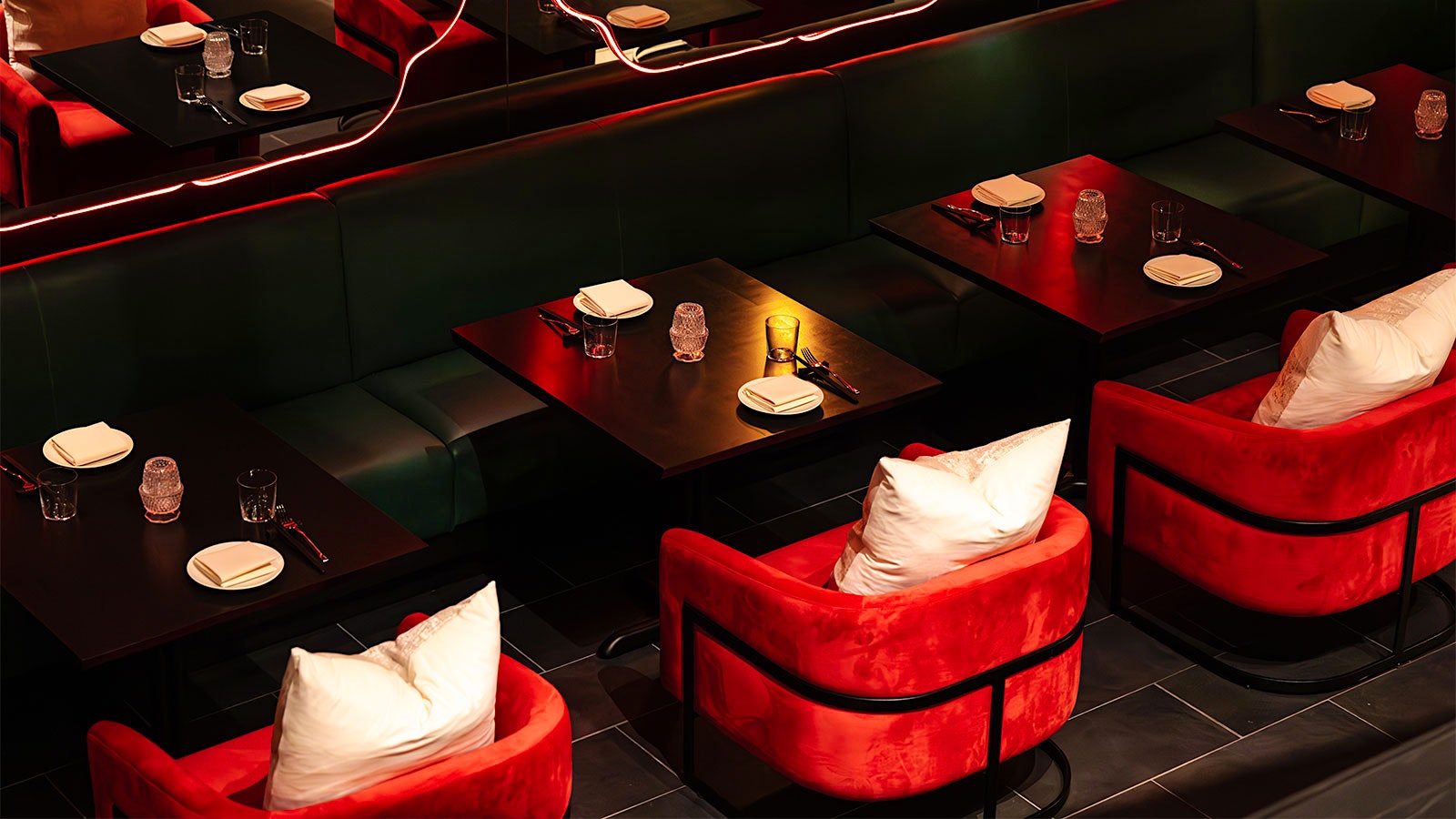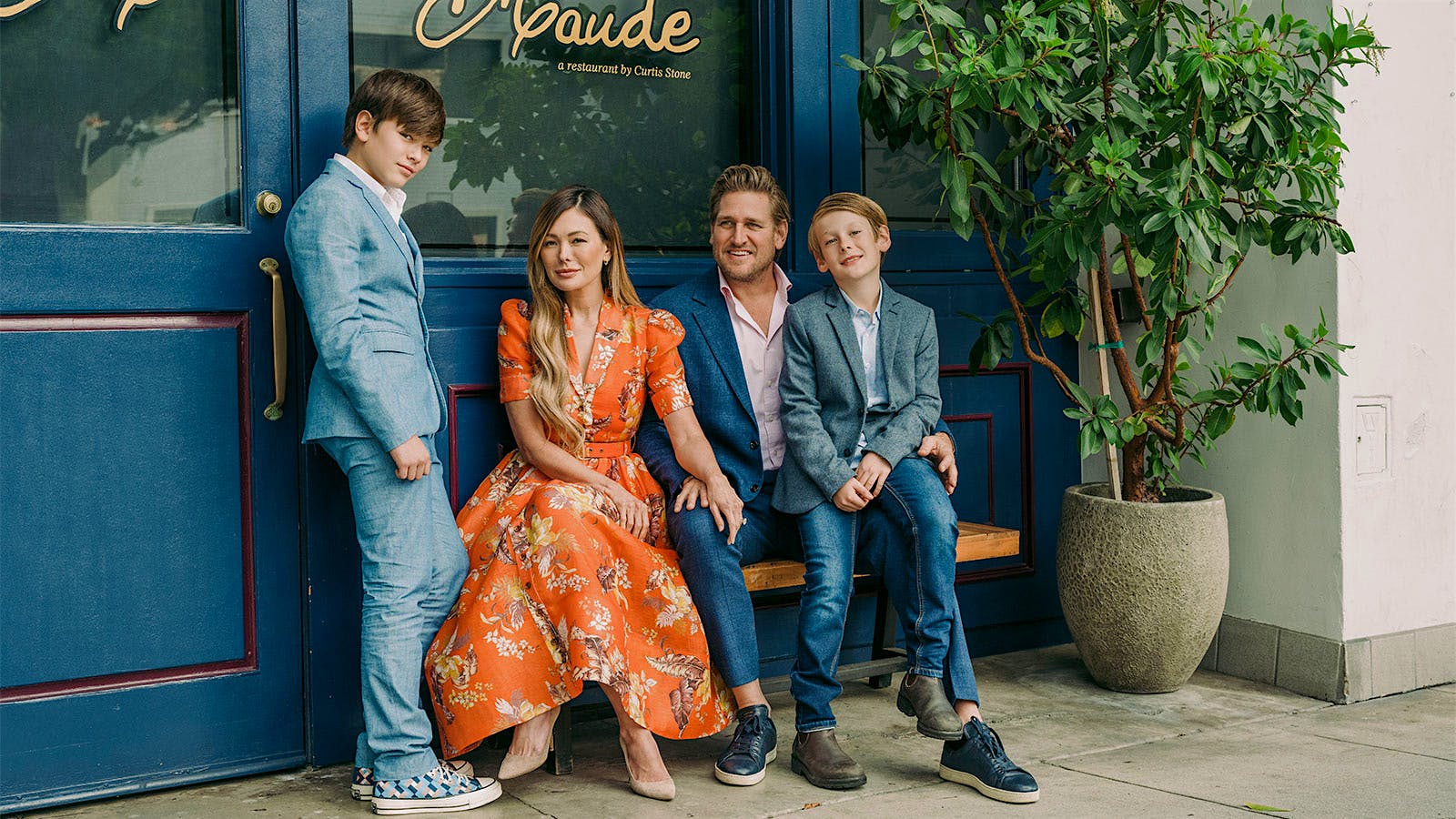Products You May Like
What’s happening: Australian-born, Los Angeles–based chef Curtis Stone recently announced that he will close his 10-year-old tasting-menu restaurant Maude in Beverly Hills, Calif. The restaurant has held a Wine Spectator Best of Award of Excellence since 2019, and it is named after one of the chef’s grandmothers, as is Stone’s other L.A. restaurant, Best of Award of Excellence winner Gwen Butcher Shop & Restaurant (co-owned with the chef’s brother, Luke Stone).
“I’ve never been one that wants to get stuck in something,” Stone told Wine Spectator. “We always wanted [Maude] to be this beautiful creative outlet where we could cook with a certain amount of freedom and be able to create something very special from an experienced perspective. We didn’t have a signature dish because we didn’t want to have to keep cooking the same thing. And I feel like we did that. It’s a really special restaurant. But I do think you give yourself the creative opportunity to continue on.”
When it’s closing: Sept. 28, 2024
Why Maude’s closing: Stone pointed out that while Maude did fine financially and was quite popular with the public and critics, it was more a gastronomic endeavor than a financial one. But two other considerations were more meaningful in his decision.
The first is an ancient and universal one: “I’m just feeling a little tapped from a time perspective,” Stone explained. “So, I’m like, ‘How do I fix that?’ I walk into that restaurant and every little detail, every little trinket, every piece of artwork and knife and fork, I picked it all. It’s a real expression of me. But then, you know, I also have kids that I want to spend time with. And I think sometimes you’ve got to close the door to be able to open the next one.”

The other consideration came out of the COVID-19 pandemic: “I was trying to keep my staff together, so we sat in a circle and I was like, ‘What does the world need?’ Someone said, ‘The world needs a hug.’ And I was like, ‘Yup, how do we do that with food?’ Someone said, ‘What about a pie? You know, let’s make pies.’” What followed was the Pie Room by Curtis Stone, where Stone and his team served savory Australian and British pies and, later, also tarts, quiches and sausage rolls, all from a tiny kitchen. They sold out early every day. Ultimately, Stone asked “Why not just bring it back and [make it] time to say goodnight to Maude?”
Looking ahead: While the original Pie Room pop-up closed in 2021, the concept will reopen in the Maude space after Sept. 28. But the baked goods will be prepared off-site; Stone has secured a much bigger kitchen nearby, one with deck ovens, a chocolate room and space and equipment to produce just about everything a bakery might. He’ll also be bringing in charcuterie from Gwen. For now, it looks like the new Pie Room will primarily be a bakery and wine bar serving many tastes and needs. But since flexibility is part of what excites Stone, there may be more to come.—Owen Dugan
Grand Award Winner Picasso Turns Off Its Lights in Las Vegas
What’s happening: After 26 years as one of the most prominent restaurants in Las Vegas, Picasso has closed its doors at MGM Resorts’ Bellagio Las Vegas, where it had overlooked the hotel’s iconic fountains. For 22 of those years, the restaurant earned a Wine Spectator Grand Award (the highest level for our Restaurant Awards), in recognition of its world-class wine program.
Spanish chef Julian Serrano opened Picasso in 1998, following several positions in Europe and the United States, the most notable being a 14-year tenure as executive chef of the now-closed Masa’s Restaurant in San Francisco, a landmark of nouvelle cuisine. Serrano’s masterfully presented prix-fixe menus blended Spanish and French traditions and made the restaurant a central player in the movement that brought haute cuisine to Las Vegas. In addition to this culinary artistry, Picasso’s guests dined among artworks from the restaurant’s namesake: Nine Pablo Picasso paintings and two ceramic sculptures were displayed in the dining room until 2021, when MGM Resorts sold them for a collective $110 million.

When Picasso closed: Aug. 16, 2024
The future of the wine cellar: The remaining bottles in the Picasso cellar will be distributed among other MGM Resorts restaurants, according to a representative of the company. The most recent wine program boasted 1,750 labels, with 15,000 bottles in the cellar. Highlights from the list included a selection of more than 100 Champagnes, a Bodegas Vega Sicilia Unico vertical that went back to 1965 and an eye-popping collection of Screaming Eagle. The restaurant’s most expensive bottle of Screaming Eagle was the 2014 vintage at $14,600, though this was not nearly the most expensive bottle on the list; that distinction was held by the Domaine de la Romanée Conti Romanée Conti 2007 at $65,775.
Looking ahead: While there has yet to be an announcement about a permanent replacement, the move has allowed the Bellagio team to update another of its signature restaurants: Best of Award of Excellence winner Prime Steakhouse will temporarily move into the Picasso space this fall, while its primary location is remodeled.
Even with this loss, wine lovers continue to have a range of acclaimed dining options at Bellagio, including Restaurant Award winners Michael Mina, Le Cirque, Spago by Wolfgang Puck and several others. Serrano’s other restaurant at the hotel, Best of Award of Excellence winner Lago by Julian Serrano, will remain open, though he will no longer be overseeing the kitchen. The acclaimed chef will still head Julian Serrano Tapas at ARIA Resort & Casino in Las Vegas, which is also within the MGM Resorts family.—Greg Warner
Choy Gives Chinese American Dining a Southern Accent in Nashville
Who’s behind it: San Francisco–based restaurateur Brandon Jew, executive chef of Chinatown restaurant Mister Jiu’s, has brought his contemporary take on Chinese American dining to downtown Nashville’s artsy Gulch neighborhood. Choy, an upscale East Asian concept with an impressive wine list to match, is a collaboration with Nashville restaurateur Moni Advani and former Mina Group director of operations Nishaan Chavda, who co-own the restaurant.
When it opened: July 30, 2024
The culinary approach: Jew developed the menu with executive chef Brian Griffith, a Tennessee native who previously served as sous chef at Mister Jiu’s, known for its fresh perspective on Cantonese cuisine. Contrasting with Mister Jiu’s, the dining experience at Choy is influenced by the American South, with fresh ingredients sourced from local farmers and purveyors based in Tennessee and its surrounding states, offering a distinctive take on traditional Chinese-American dishes.

The menu starts with appetizers like a pressed pig’s ear terrine (accented by 10-year-aged black vinegar and hot mustard) and pan-fried turnip cakes with shiitake mushrooms and scallop XO sauce. Almost like primi dishes at an Italian spot, Choy offers an assortment of rice, noodle and dumpling plates like squid and pork wontons tossed in a sesame and squid ink vinaigrette with fermented Fresno chiles and chicken rice bowls with okra and yellow squash, dressed in a sacha inchi emulsion.
One of Choy’s signature dishes is the large-format Peking roast duck (able to serve parties of four to six), rubbed with brown rice syrup, dark soy sauce and a custom 10-spice blend. The bird is then served with duck liver mousse, greens, peanut butter hoisin sauce and pancakes. Other mains include a salt-and-pepper whole-fried flounder dressed with green tomatoes and fermented kohlrabi, or chicken-fried steak slathered in mapo tofu. Desserts include dim sum cart staples like dark chocolate jian dui (deep-fried sesame balls) and sorghum ma lai go (a steamed cake made with brown sugar and vanilla).
What’s on the wine list: Featuring more than 150 selections, the wine program is curated by wine director Justin Mueller, formerly of Best of Award of Excellence winner Beckon in Denver. Mueller said his intention was to focus on both quality and accessibility in equal measure, especially for the by-the-glass list, which ranges from refreshing Assyrtiko to 26-year-old Sauternes. “Nothing is more disappointing than going to a nice restaurant to find the wines poured by the glass are cheap and insipid,” Mueller told Wine Spectator via email. “At Choy, all the wines we serve by the glass are from producers that are either benchmarks in their region, family-owned, sustainability-minded or some combination thereof.”
The list, itself, shows a strong emphasis on French producers, with ample selections from Champagne, Bordeaux, Burgundy, the Loire Valley and the Rhône Valley, including star wineries such as Billecart-Salmon, Château Cos-d’Estournel and Domaine Leflaive. Italy and California also make up a substantial portion of the list, with many Piedmontese and Tuscan options, as well as acclaimed Cabernet Sauvignon, Pinot Noir and Sauvignon Blanc from leading West Coast wineries like Rivers-Marie, Dunn, Opus One and Spottswoode.

Throughout the list, Mueller emphasizes well-aged wines, with nearly a third of the selections being over a decade old. Some of these older bottles include Mayacamas Mount Veeder 2004, Caparzo Brunello di Montalcino La Casa 2004 and Château Ducru-Beaucaillou St.-Julien 2001. “I love offering wines that are well into their development to showcase how amazing [they] can be,” said Mueller.
The space: Tennessee-based firm Carlton Edwards designed the 120-seat space, harkening back to Art Deco Shanghai eateries of the mid-20th century. The two-story interior is lined with vintage-inspired wallpaper and accented by murals and Chinese oil paintings. Central to the space is a large red-and-black marble bar and a glass-enclosed wine cellar displaying over 1,000 bottles from Mueller’s program.—Olivia Nolan
Keep up with the latest restaurant news from our award winners: Subscribe to our free Private Guide to Dining newsletter!
